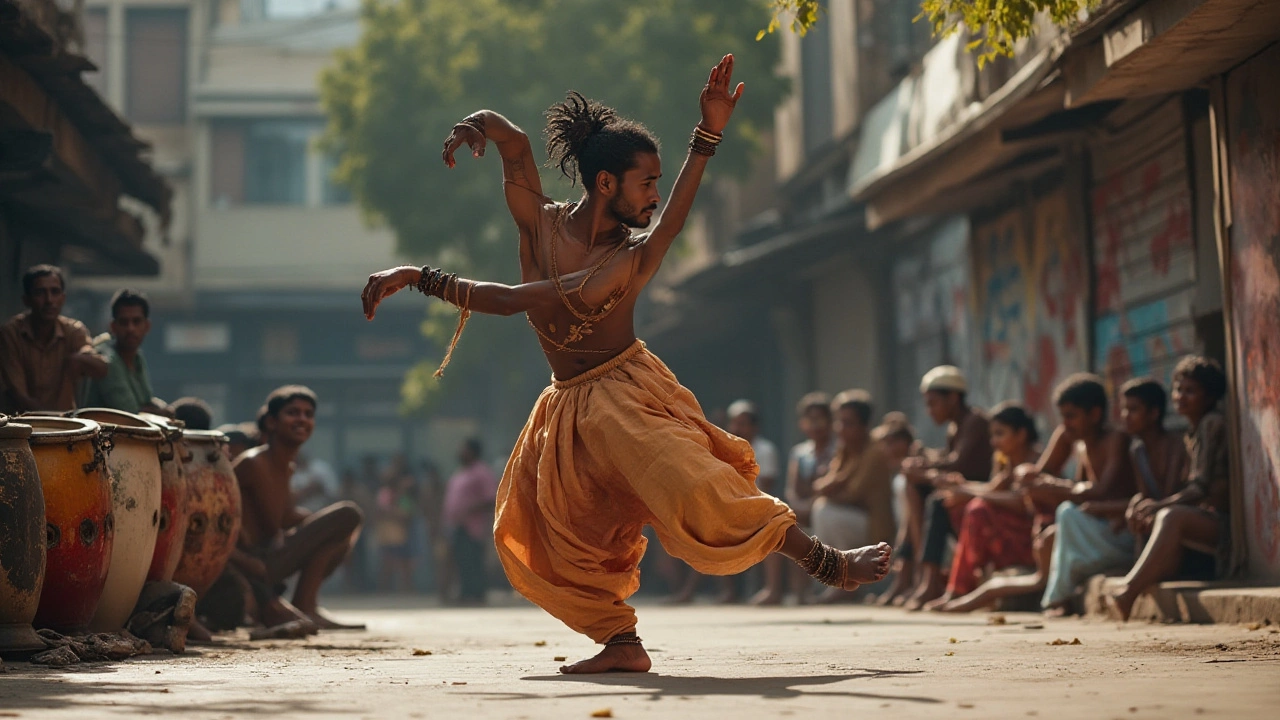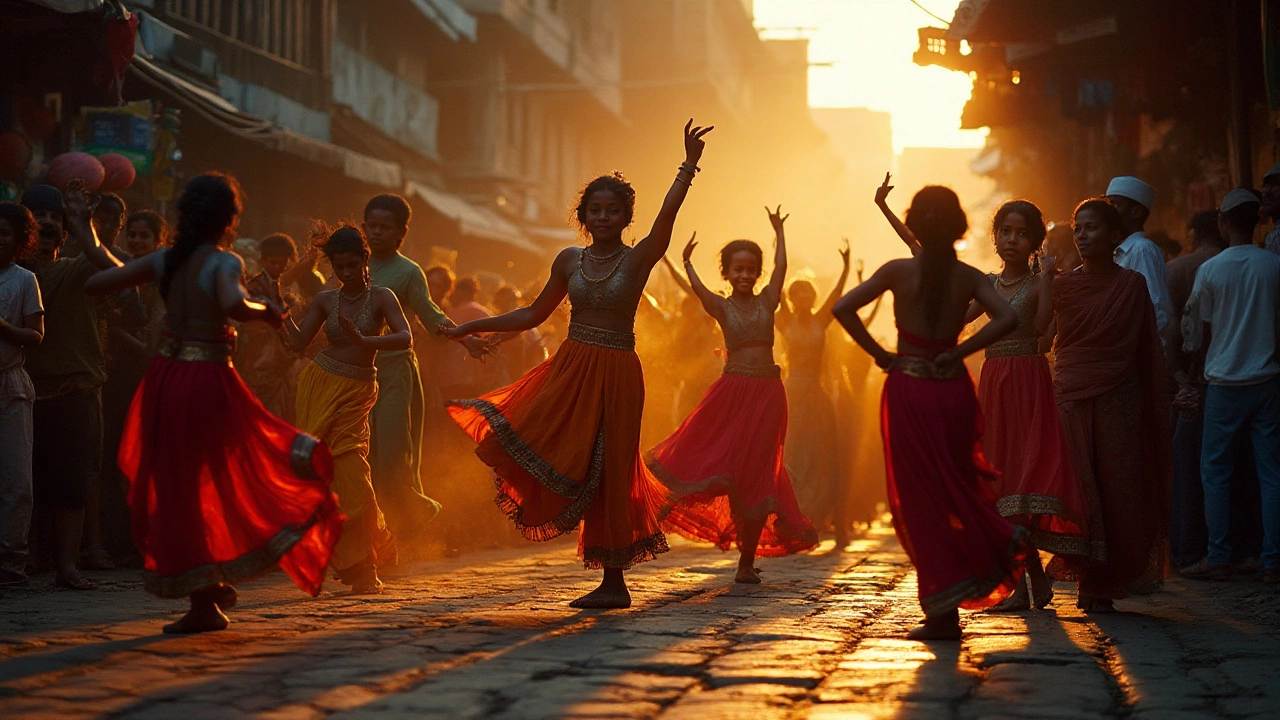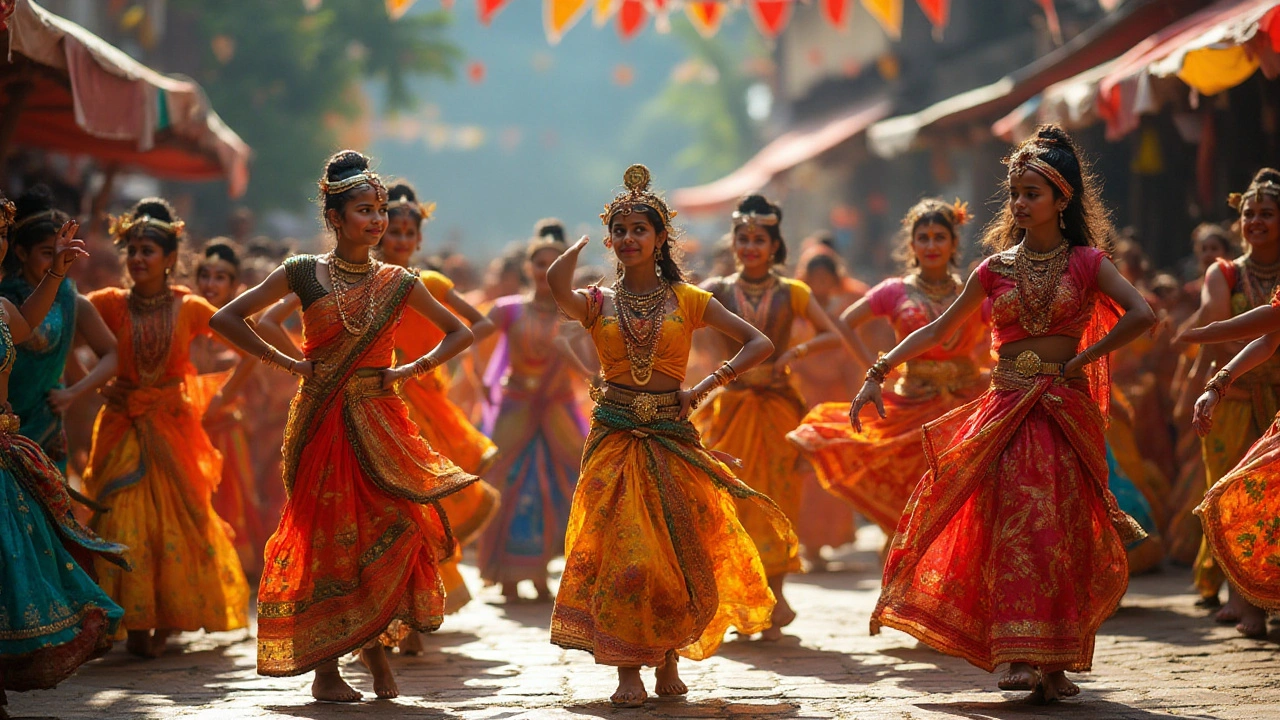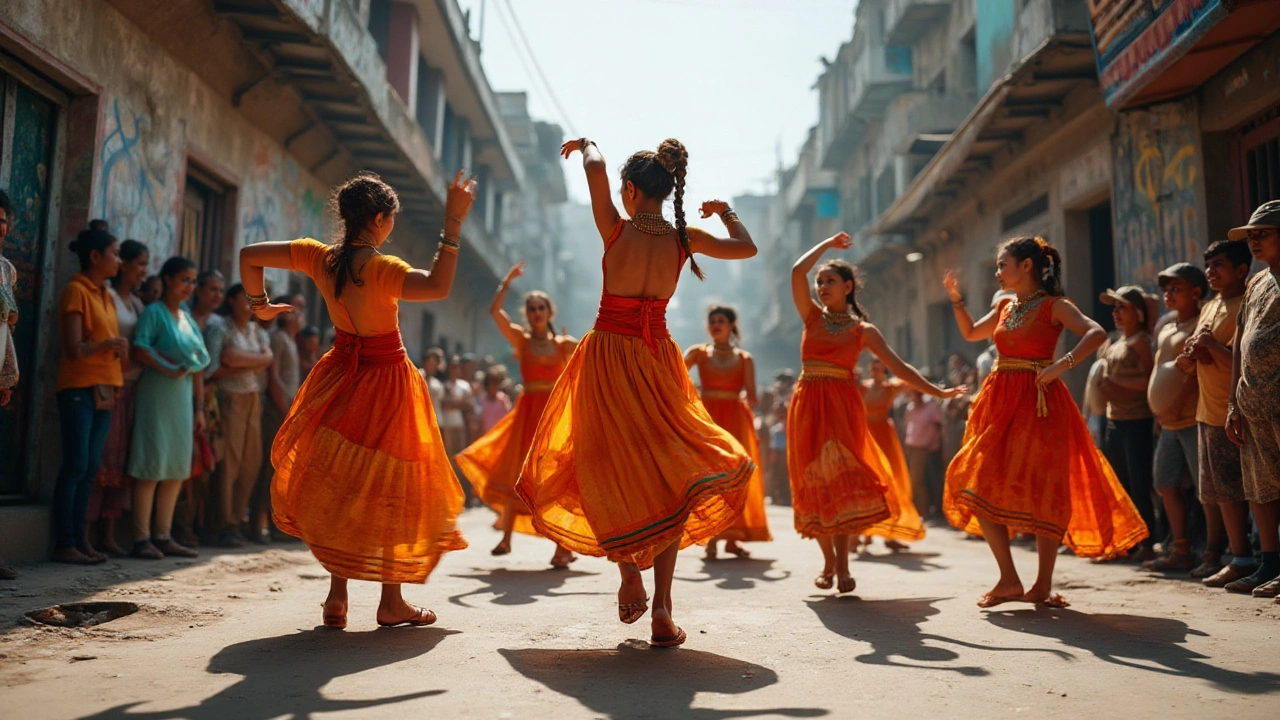In the vibrant world of dance, language often dances alongside rhythm, reflecting the culture from which it springs. Many regional dance forms have developed their own vernacular, a unique street word or colloquial term that embodies the spirit and essence of the style. This dance lingo is more than just a label; it's a living testament to the community's history, creativity, and resilience.
From the bustling streets of New York where hip-hop was born, to the lively squares in Rio where samba takes center stage, each dance style carries with it a tapestry of stories woven into every movement and phrase. These dance forms, rooted in their respective cultures, not only entertain but also serve as a vehicle for storytelling and social commentary.
As we explore the world of regional dance and its street vocabulary, we gain insights into a lively cultural phenomenon that connects individuals across the globe, transcending language barriers while celebrating diversity. Join us on this rhythmic journey as we uncover not just the words, but the passion and people behind them.
- The Fusion of Dance and Language
- Notable Street Dance Influences
- The Cultural Significance of Dance Lingo
- Tips to Engage with Street Dance Culture
The Fusion of Dance and Language
The intersection between dance and language paints a vivid picture of cultural evolution. Dance, much like language, is a dynamic entity, constantly evolving and adapting to the symphony of time and human experience. Street dance, in particular, exemplifies this phenomenon, deriving its strength and identity from the eclectic mélange of diverse cultural elements. As dance moves echo cultural narratives, the accompanying vernacular adds another layer of expression, cementing the connection between movement and meaning. The street name for a dance often carries deeper meaning, reflecting historical significance or community spirit.
The term “breakdancing” is a prime example of this intertwining narrative. Originating in the Bronx during the 1970s, it wasn’t just about the explosive dance moves; it was a form of expression born from the socio-economic realities faced by urban youth. The language surrounding breakdancing, including slang terms for moves, became a reflection of the life and strife in those communities. To quote dance historian Sally Banes, a respectable source on the matter,
"Breakdancing was a form of self-contained rebellion, where each move was a word, each routine a sentence in the unwritten street narrative."
The Linguistic Influence on Dance
Understandably, as dance forms are named and evolve, the words used to describe them act as an identifier, often indicating the origins and evolution paths of these art forms. The term "Krumping," for example, finds its roots in Los Angeles. Emerging in the early 2000s, it was marked by its expressive, freestyle nature and emotional intensity, evident not only in its choreography but also in the fervent language dancers used. Krumping terminology was a nod to its aggressive artistic style—a way for dancers to channel and verbally express emotions embedded in the dance.
Sometimes, these words are adopted by mainstream culture, while other terms remain closely guarded within specific communities. The lexical components of dance expand and evolve as trends shift and new influences emerge. This can be seen in the evolution of hip-hop, which has contributed a vibrant lexicon to the wider English language, including words like "freestyle" and "popping." Such terms encapsulate specific techniques and intensify the communication between dancers and audiences. In each case, the street word for dance isn’t just an identifier—it transforms how the dance is perceived and engaged with by the world.
Community and Cultural Bonding
The dance and the language grow together, fostering a bond that nurtures community. The street vocabulary serves not only as a repository of techniques and moves but also embodies cultural rites, connecting people despite geographic and social divides. This global dance phenomenon underscores a shared human experience. Dance communities across the world might speak different languages, but the dance-related parlance provides a universal thread. For those participating, the act of naming a dance solidifies their stakes in a shared cultural space, offering both a sense of pride and belonging.
Recognizing dance forms as powerful cultural signifiers means appreciating the language that brings them to life. This fusion of dance and language reminds us how art and expression can transcend borders, resonating with countless individuals worldwide. It is a testament to the rich diversity of human creativity and how such creativity shapes, and is shaped by, language. As dance continues to evolve, so does its language, ensuring that the story of each dance form remains vibrant and resilient.

Notable Street Dance Influences
Street dance has long been a dynamic form of expression, driven by the creativity and energy of urban youth eager to carve out a cultural space of their own. Originating from the bustling cityscapes, these dance styles have often been inextricably linked to the notion of community, where participants come together to share not just moves, but also stories and experiences. The reach of street dance has expanded beyond its grassroots origins to become a central part of popular culture, yet it retains the raw authenticity that made it compelling from the start.
In the world of street dance, hip-hop stands out as a defining influence. Emerging from the Bronx in the late 1970s, it quickly became a medium for marginalized communities to express their struggles and aspirations. Hip-hop encompasses not just dance but a whole culture, including music, fashion, and art. Innovations like breakdancing, popping, and locking, each carry their own distinct flavors and techniques, woven into the larger tapestry of hip-hop culture.
The 1990s gave rise to krumping, a style known for its expressive and energetic movements that reflect a wide range of emotions. Krumping originated in Los Angeles as a way for dancers to channel anger and frustration into something positive. It was once described by director David LaChapelle in his documentary "RIZE" as evoking 'an emotional release,' where physical intensity meets artistic liberation.
"Krumping is a revolution. It's punk rock. It's pure," LaChapelle noted, observing the raw energy that krumpers put on display.
Another fascinating street dance form is the samba de gafieira from Brazil, known for its intricate footwork and exuberant spins. Though performed in streets and squares, it retains its place in ballrooms as well. The dance is highly improvisational, which makes it resilient and ever-evolving. Similarly, the house dance, which came out of the Chicago club scene and influences from New York, predominantly involves footwork, fluidity of movements, and an innate connection with house music's rhythm.
Street dance forms serve not only as artistic outlets but also as powerful vehicles for social change. The language of street dance continues to evolve, driven by the innovations of new generations eager to tell their stories and reshape the narrative of culture. As street dance spreads globally, thanks to platforms like YouTube and TikTok, it has a profound impact on both local and international levels, solidifying its place in the cultural lexicon. It’s a reflection not only of the places where it originated, but also of a world that values creativity and the power of shared human experience.

The Cultural Significance of Dance Lingo
Dance lingo is more than just jargon; it serves as a cultural beacon for communities that create and nurture these dynamic art forms. The use of specific terminology, often infused with regional dialects or slangs, represents a living history of the people and places that birthed these dance styles. It functions as a bridge connecting generations, preserving traditions while allowing room for evolution and innovation. The street word for dance in many urban landscapes carries with it echoes of both struggle and triumph, encapsulating stories of identity and resilience.
Take, for instance, the term "breaking," which signifies both a dance style and a cultural movement within hip-hop. Born in the South Bronx during an era of economic and social hardship, breaking became a form of expression for marginalized youth. It was a way to reclaim their narrative and space, using dance as a powerful tool for storytelling and community building. The language used in breaking—words like "cypher," "freeze," and "toprock"—reflects both the technical elements of the dance and the communal aspects of its performance. Each term carries weight and meaning that resonates deeply with its practitioners.
Moreover, dance lingo often crosses borders, adapting and morphing as styles are exchanged across continents. The street word for urban dance in one city might be adopted and adapted in another, demonstrating the fluidity and adaptability of language within the arts. This linguistic exchange mirrors the exchange of dance techniques and styles, creating a vibrant global dance culture rich with diversity. Such adaptability underscores the intrinsic inclusivity and openness of dance as a universal language.
Pioneering hip-hop artist and dance enthusiast Afrika Bambaataa once stated, "Hip hop culture is like a tree rooted in peace, love, unity, and having fun." This sentiment captures the essence of how dance lingo serves as a conduit for larger cultural ideas, promoting not just artistry but community values.
In recognizing the cultural significance of dance lingo, it becomes evident that these words are not merely functional. They are emblematic of the struggle for identity and recognition, serving as an anthem for those who participate in the vibrant cultures from which they arise. Dance language, therefore, commands respect not only for its artistic merit but also for its role in capturing and perpetuating the spirit of a people. As such, understanding and engaging with dance lingo can enrich one's appreciation of both the dance form itself and the stories and values it embodies.

Tips to Engage with Street Dance Culture
To truly connect with the vibrant world of street dance, it's essential to immerse yourself in its unique atmosphere and energy. Street dance is not just about movement but about understanding the community and the cultural context that gives birth to these dances. One of the first steps to engage with any urban dance scene is to observe and listen. Attend local dance battles, which often serve as cultural hubs where dancers showcase their skills and exchange techniques in a friendly yet competitive environment. These events are not only thrilling to watch but also offer valuable insights into the unwritten rules and codes that govern these communal spaces.
Jumping into a street dance workshop is another excellent way to grasp the basics and nuances of various dance forms such as breaking, popping, or locking. Most urban centers and major cities host regular workshops where skilled dancers teach both beginners and seasoned movers. These sessions are not just instructional but are breeding grounds for creativity and camaraderie. Don't hesitate to ask questions and mingle with fellow participants; it’s a chance to hear different stories and origins of dance moves, enriching your understanding of the dance’s history and evolution.
Participating and Learning
Beyond attendance and observation, active participation is a key factor. Join local street dance crews or informal practice groups to get a firsthand experience of what it's like to be part of this dynamic community. Engaging regularly with dancers who live and breathe street culture will not only improve your skills but also open doors to learn about how dance intersects with fashion, music, and street art. As an esteemed dance educator once said,"Street dance is where music and human motion collide in the most spectacular way, creating a universal language everyone can learn if they're willing to listen."
Respect and Authenticity
A word of caution as you delve into street dance: respect is paramount. Always approach the culture with admiration and sincerity. Acknowledge the unique histories and struggles that have shaped these dance styles. Authenticity goes a long way in street dance circles, so strive to remain genuine in your intentions and efforts. Be mindful not to appropriate; instead, aim to appreciate and contribute positively by acknowledging the roots and pioneers who paved the way for new generations of dancers. Always credit the original artists and strive to uphold the integrity of the dance styles you explore.Embracing Technology
While traditional in-person connections remain invaluable, leveraging technology can also play a pivotal role in your involvement with street dance culture. Platforms like YouTube, Instagram, and TikTok are rich resources for finding tutorials, live performances, and behind-the-scenes looks into the lives of street dancers worldwide. Many renowned dancers share their wisdom online through video blogs, short dance films, and virtual workshops. These resources can serve as excellent supplements to your in-person learning experiences.To sum up, engaging with street dance culture requires a blend of observation, participation, respect, and continuous learning. Whether through local events or digital platforms, your genuine interest and effort will undoubtedly enrich your understanding and appreciation of street dance, allowing you to move in harmony with its vibrant beats.
